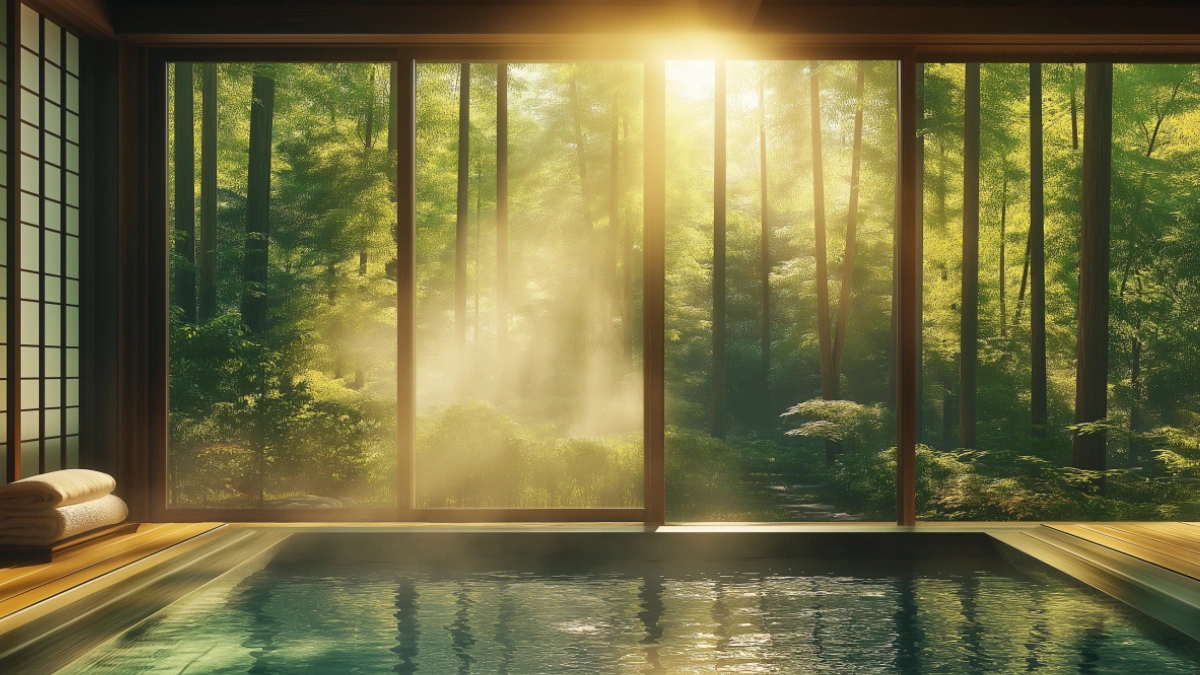Why the Japan Countryside Is the Escape You’ve Been Dreaming Of: Nature, Tranquility, and Authentic Beauty
Table of Contents
When most people think of Japan, their minds jump to Tokyo’s neon lights or Kyoto’s grand temples. But far from the bustling cities, there’s another side of Japan—quiet, pastoral, and deeply grounding. The Japan countryside offers more than just scenic views; it’s a complete sensory escape. With misty mountains, ancient thatched villages, rice fields that sway in the breeze, and silence broken only by the chirping of cicadas or a flowing stream, the countryside provides a timeless retreat.
In a world where digital noise and nonstop motion dominate, the calm rhythm of rural Japan stands as a much-needed reset. It invites you to breathe slower, walk further, and reconnect with nature and simplicity. Whether you’re exploring Nara’s rolling hills, the terraced landscapes of Takayama, or a coastal fishing town along the Noto Peninsula, the countryside reveals Japan’s soul.
This post will take you on a journey through what makes the Japan countryside so healing and enchanting. From its natural wonders to historic charm and cultural treasures, you’ll discover why it’s the kind of escape your mind and spirit crave.
Timeless Villages and Thatched-Roof Homes
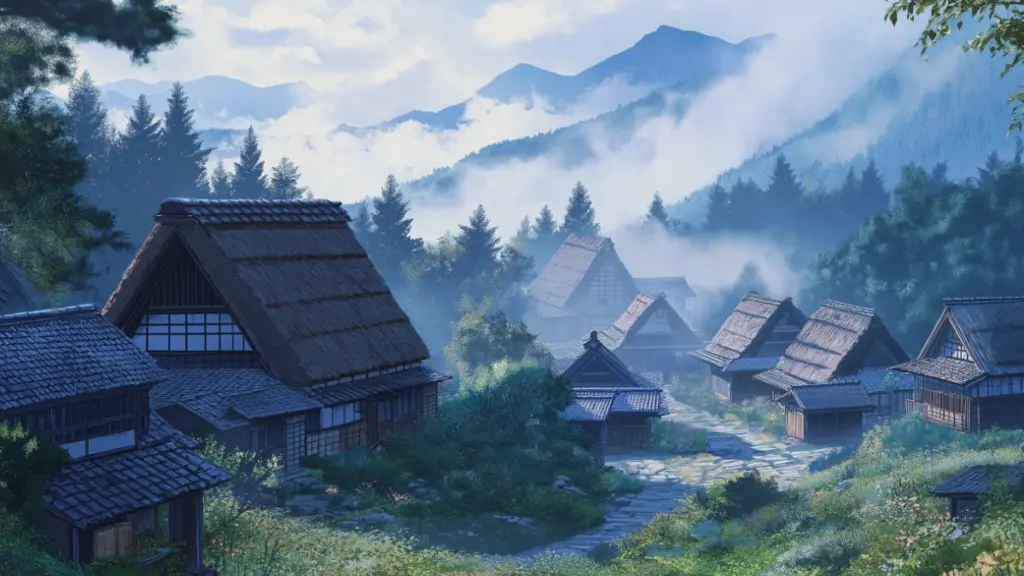
One of the most defining features of Japan’s rural regions is the architecture that time forgot. In places like Shirakawa-go or Gokayama, you’ll find gasshō-zukuri homes—large wooden farmhouses with steep thatched roofs designed to withstand heavy snowfall. These villages, often nestled in remote valleys, preserve the traditional ways of life with admirable precision.
Walking through these settlements feels like stepping into a living museum. There’s no rush, no billboards, and no honking traffic—just gravel paths, the smell of cedarwood, and rooftops that seem to cradle the sky. Many of these villages are UNESCO World Heritage sites and are protected not just for their visual charm, but for their cultural significance.
Visual Breakdown: Traditional Japanese Village Architecture
| Element | Description |
|---|---|
| Gasshō-zukuri Roofs | Steep thatched design resembling hands in prayer |
| Wooden Latticed Windows | Filter natural light and provide insulation |
| Raised Floors | Protect from moisture and cold |
| Fire Hearths | Irori used for heat and cooking |
| Stone Pathways | Meander naturally through villages |
Nature’s Harmony: Rice Fields, Mountains, and Forests
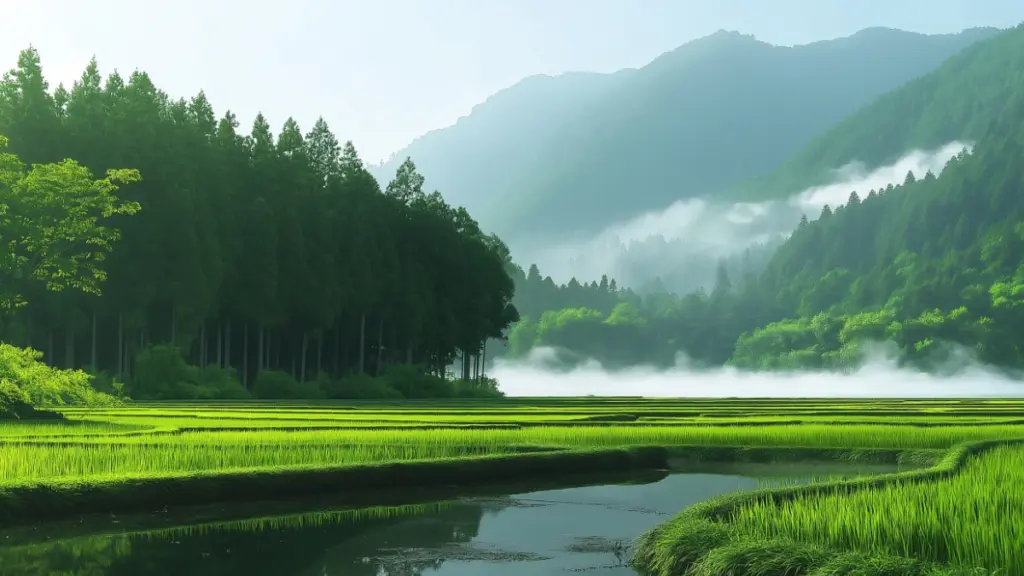
The Japan countryside is a masterclass in harmony between human life and nature. Tiered rice paddies curve with the hills, reflecting the sky like mirrors during early planting season. Bamboo forests rustle softly as the wind moves through, and distant mountains—sometimes snow-capped—frame nearly every rural view.
This connection with nature is deliberate. Japanese rural design often incorporates elements of shizen (naturalness) and wabi-sabi (the beauty of imperfection and impermanence). Whether you’re hiking a mossy path in the Kiso Valley or simply looking out over a mist-covered river in Tottori, you feel a shift—life slows down.
Checklist: Natural Features Found in the Japanese Countryside
| Feature | Where You Might Encounter It |
|---|---|
| Terraced Rice Fields | Niigata, Yamagata, or Wakayama |
| Mountain Ranges | Japanese Alps, Nagano |
| Cedar & Bamboo Forests | Arashiyama, Iya Valley |
| Coastal Cliffs | Noto Peninsula, Shimane |
| River Valleys | Kiso Valley, Takachiho Gorge |
Healing Hot Springs and Remote Ryokan Stays
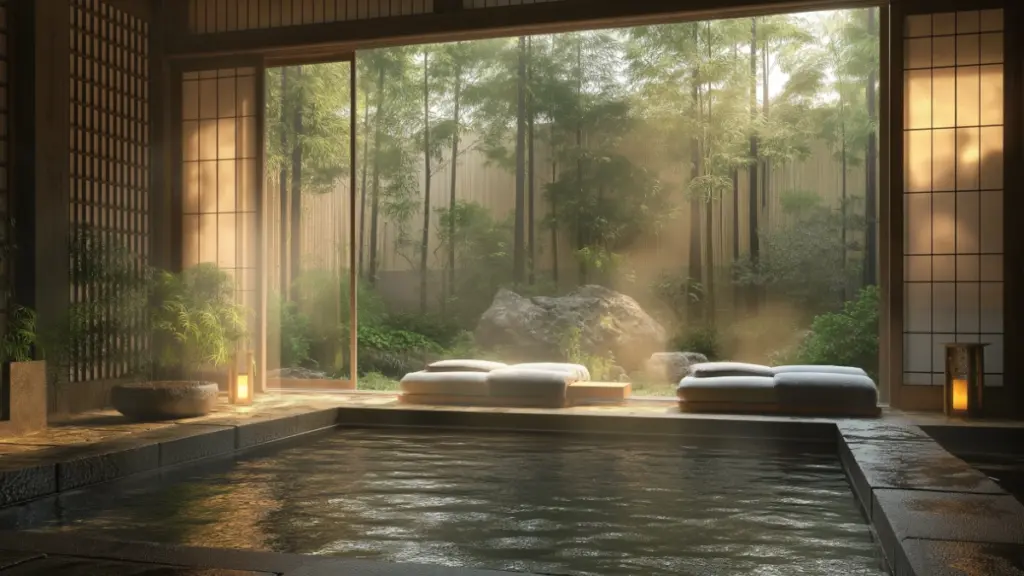
For those who crave both serenity and comfort, rural Japan delivers in the form of onsen (hot springs) and ryokan (traditional inns). The countryside is dotted with onsen towns like Kurokawa, Nyuto, and Okuhida—hidden away in forests or beside mountain streams. These healing baths use naturally heated mineral water sourced from volcanic activity and are revered for their physical and mental benefits.
Staying at a countryside ryokan deepens the experience. You’ll be welcomed with matcha tea, sleep on tatami floors, and dine on multi-course kaiseki meals featuring hyper-local ingredients like mountain vegetables, river fish, and handmade tofu. The slow pace and hospitality of ryokan culture reconnect you to a quieter version of yourself.
Table: What to Expect from a Countryside Ryokan and Onsen Stay
| Experience | Detail |
|---|---|
| Tatami Rooms | Straw-matted floors with futon bedding |
| Open-Air Onsen | Baths with scenic views of nature |
| Seasonal Kaiseki Meals | Multiple-course dinners showcasing local flavors |
| Yukata Robes | Light cotton robes for relaxing and walking to baths |
| Omotenashi Hospitality | Deeply attentive, peaceful service |
Seasonal Beauty That Transforms the Landscape
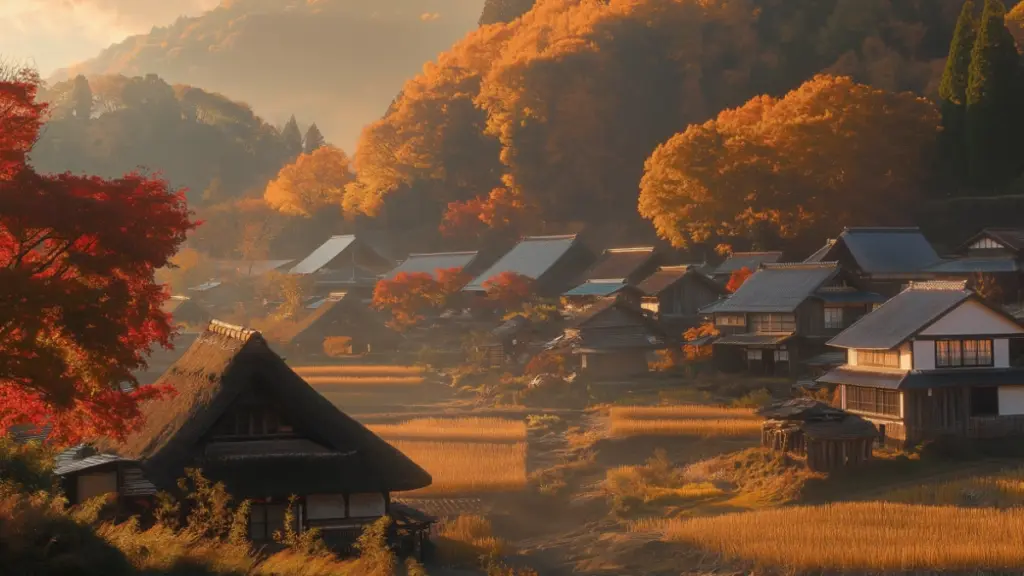
Every season in the Japan countryside offers a new reason to return. In spring, cherry blossoms bloom along quiet rivers and mountainsides. Summer brings lush greenery and the sounds of frogs and cicadas. Autumn is ablaze with fiery maples and golden ginkgo trees. And winter? It’s a snow-globe world of silent fields and smoke curling from chimney tops.
Unlike cities, where seasons are marked by store displays, in the countryside, you live the transition. Local festivals shift with the harvest, foods change with what’s grown nearby, and traditions adjust accordingly. The seasons don’t decorate the countryside—they define it.
Table: Seasonal Highlights in Rural Japan
| Season | Signature Experience |
|---|---|
| Spring | Cherry blossom tunnels, baby rice shoots |
| Summer | Firefly watching, green rice fields, mountain hikes |
| Autumn | Koyo (leaf peeping), harvest festivals |
| Winter | Snow-covered villages, hot spring bathing |
The Culture of Simplicity and Slowness
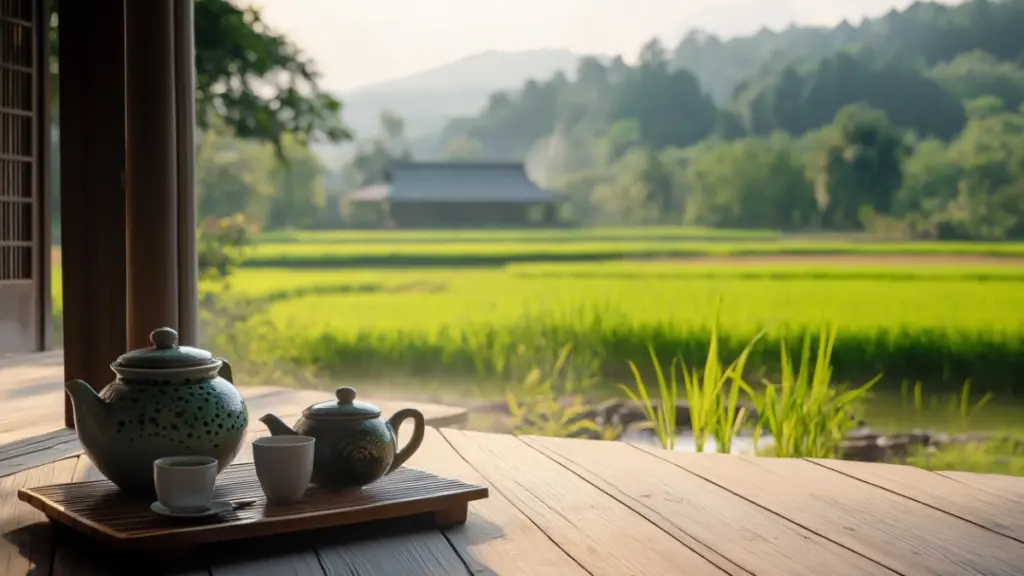
Perhaps the greatest luxury the Japan countryside offers isn’t scenic—it’s philosophical. Life moves slowly here, governed more by sunrise and sunset than by digital clocks. The concept of ichigo ichie—a once-in-a-lifetime moment—is lived out in tea poured slowly, vegetables picked that morning, or conversations exchanged with a passing farmer.
In these quiet towns and farming villages, you’re not just observing a slower pace—you’re invited to live it. Roads are narrow not by limitation, but by design. Houses are open not for show, but because hospitality is a given. Even time seems to stretch longer when you trade a buzzing metro for a dirt road winding through rice fields.
Table: Practices That Promote Slow Living in the Countryside
| Custom or Habit | How It Slows You Down |
|---|---|
| Morning Market Visits | Emphasize community, freshness, and ritual |
| Gardening and Farming | Tied to seasons and rhythms of the earth |
| Tea Ceremonies | Celebrated in tranquil homes or shrines |
| Local Festivals | Centered around crops, nature, and tradition |
| Minimal Commuting | Life exists within walkable, self-sustaining space |
Local Food That Reflects the Land
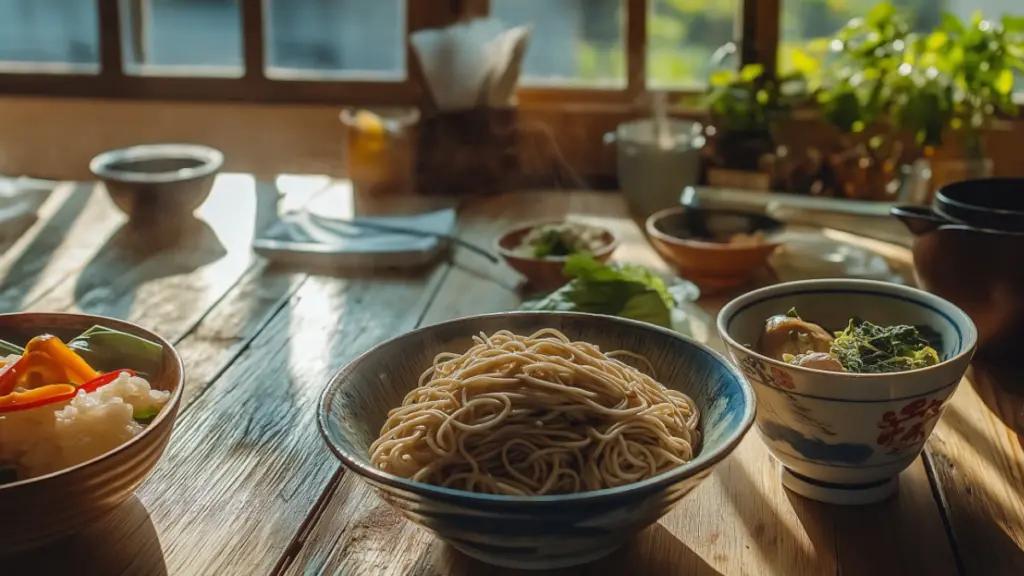
Cuisine in the countryside is hyperlocal, seasonal, and grounded in heritage. You won’t find flashy ramen shops or conveyor-belt sushi here. Instead, think of soba noodles made from buckwheat grown a field away, miso aged for generations, or wild mountain vegetables sautéed in sesame oil.
Farm-to-table isn’t a trend in rural Japan—it’s tradition. Meals are often simple but carry the rich stories of land, family, and season. Whether it’s a bento enjoyed under a cherry tree or a bowl of hot udon after a forest walk, each bite feels earned.
Visual Table: Common Dishes in Japan’s Countryside
| Dish | Ingredients & Meaning |
|---|---|
| Sansai Itame | Stir-fried mountain vegetables |
| Soba Noodles | Earthy buckwheat flavor, often handmade |
| Gohei Mochi | Grilled rice cakes with walnut miso glaze |
| Yuba (Tofu Skin) Dishes | Delicate, nutrient-rich, often home-prepared |
| Hōtō Nabe (Mountain Stew) | Hearty noodle stew, perfect for cold seasons |
Conclusion
The Japan countryside is more than a scenic retreat—it’s a place where time softens, the earth speaks, and tradition breathes. Whether through a steaming bowl of soba or a silent morning walk past snow-covered rooftops, the countryside invites you to reconnect—with nature, culture, and your own sense of peace. For anyone dreaming of an escape, rural Japan offers not just tranquility, but a return to the essential.

